This post will show you how to merge audio and video on a Windows 11/10 PC. Merging audio and video can be relatively straightforward, especially with user-friendly tools and software that cater to various project needs. These tools offer versatile media editing capabilities that let you combine various audio and video file formats, allowing for seamless integration and synchronization of different media elements. They also enable you to adjust audio levels for optimal sound quality and create professional content by combining multiple media elements.
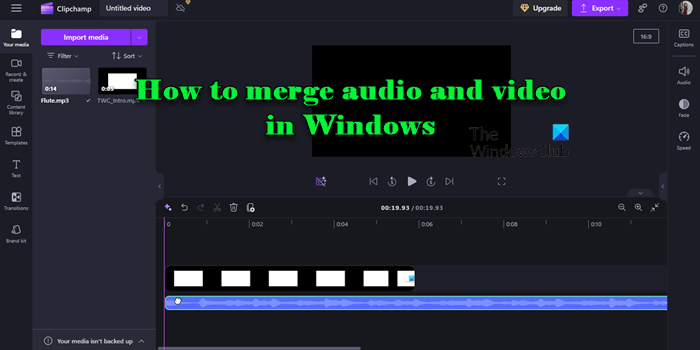
How to merge Audio and Video in Windows 11/10
Several tools can help you merge audio and video files on a Windows 11/10 PC. In the following sections, we will show you how to do this using the following tools:
- Using VLC Media Player
- Using Microsoft Clipchamp
- Using third-party tools.
1] Merge audio and video using VLC Media Player
VLC media player is a free and powerful media player widely used for its versatility and support for numerous media formats. It offers basic media conversion capabilities for changing file formats and encoding settings of input media files. Its ‘Convert‘ feature allows you to add a video file and specify an audio file to be included during the conversion process, effectively merging the two into a single output file.
To merge audio and video files using the VLC media player, follow these steps:
Open VLC and go to Media > Convert/Save. Click the Add button in the ‘Open Media’ window. Browse and select your video file. The fill will be added for conversion in VLC.
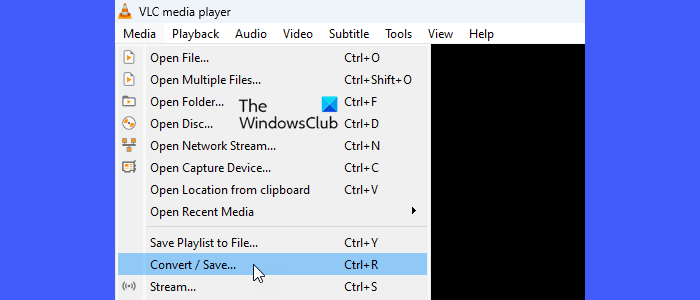
Next, enable the checkbox for ‘Show more options‘ to open the list of additional options.
Check the box for ‘Play another media synchronously (extra audio file)‘. An ‘Extra media‘ field will appear.
Click the Browse button next to the field to open another instance of the Open Media window. Follow the same steps to browse and select the audio file to be merged.
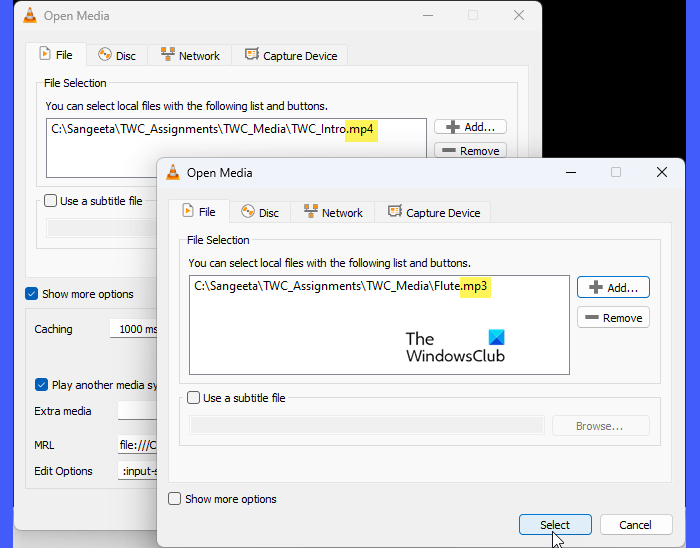
Once the audio file is loaded, click the Select button. Next, click the Convert/Save button at the bottom of the main Open Media window.
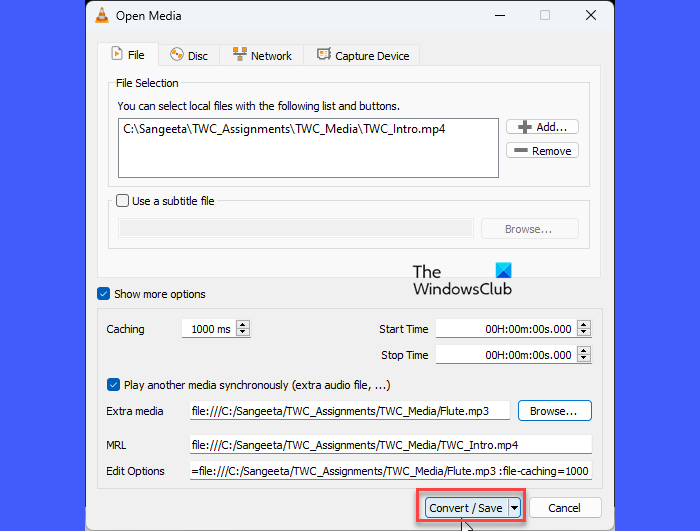
A Convert dialogue will appear. In the Convert window, select a profile that matches your output format (e.g., Video – H.264 + MP3 (MP4)).
To customize the selected profile, click the wrench icon next to the profile name. This section allows you to change the container format and adjust video and audio codecs, resolution, bit rate, and other parameters to control the quality and size of the output file.
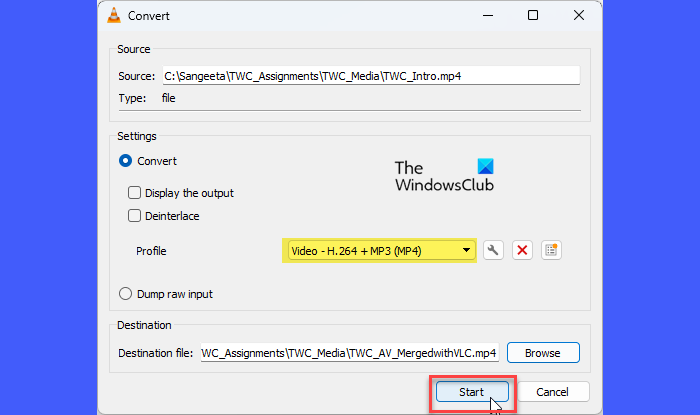
Next, click the Browse button at the bottom to select the destination (container) file. You can also choose to save the output using a different file name. Click the Save button in the ‘Save as’ dialogue. Finally, click the Start button to begin the conversion process.
VLC will merge the audio with the video and save it to the specified location.
2] Merge audio and video using Microsoft Clipchamp
Microsoft Clipchamp is a built-in video editing tool for creating and editing videos in Windows 11/10. It offers several plans, including a free plan with basic video editing features, access to some stock assets, and exports up to 1080p. The free plan also allows you to combine audio and video, providing essential tools for trimming and splitting the source files.
To merge audio and video using Microsoft Clipchamp, follow these steps:
Type ‘clipchamp’ in the Windows Search bar and press Enter to launch the app. Sign in with your Microsoft account. Click on the ‘Create a new video‘ button.
You’ll be taken to the Clipchamp editor window. Give your project a suitable name. Click the Import media button to upload your video and audio files (you may select both file types simultaneously) or drag and drop the files directly into the media library.
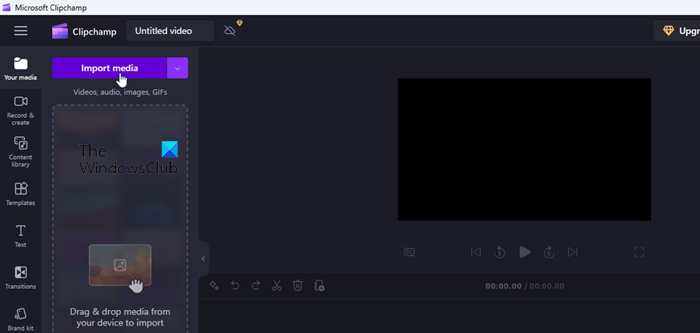
Once the files are loaded, hover over the video file thumbnail and click the plus (+) icon to add it to the timeline. Similarly, add the audio file to the timeline.
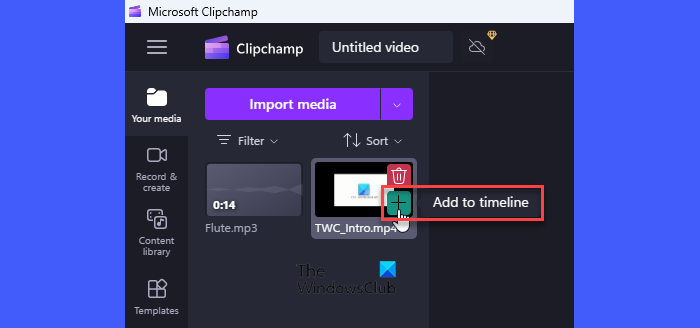
Align the audio track with the video track as needed. You can drag the ends of the audio or video tracks to trim them. Use the audio settings (in the right panel) to adjust the volume, fade in/out, or cut parts of the audio as needed. Click the Play button in the preview window to check that your audio and video are synced correctly.

Once done, click the Export button at the top right of the screen and select the desired export quality. Clipchamp will process and download the merged video file to your device.
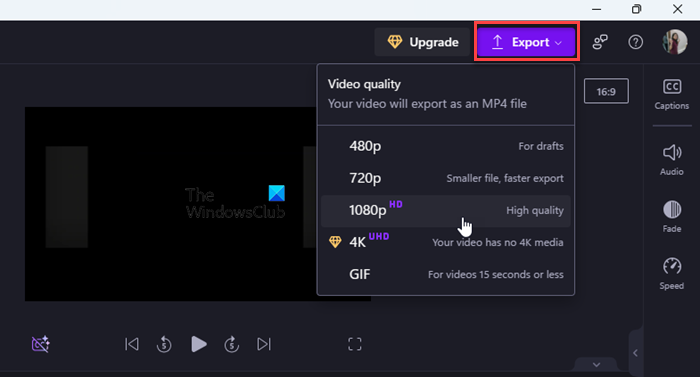
3] Merge audio and video using third-party tools
Several third-party tools, both online and desktop-based, allow you to seamlessly combine audio and video files on your Windows 11/10 PC. One such tool is Shotcut Video Editor. Shotcut is open-source video editing software that offers a wide range of features, including support for numerous video and audio formats (including 4K video support) and the ability to edit or merge these formats.
To use Shotcut, download the software (portable or installer) from shotcut.org. Once downloaded, install/extract the software and launch it on your device.
Click the Open File button. Browse and select the media files and allow them to load into Shotcut’s Playlist.
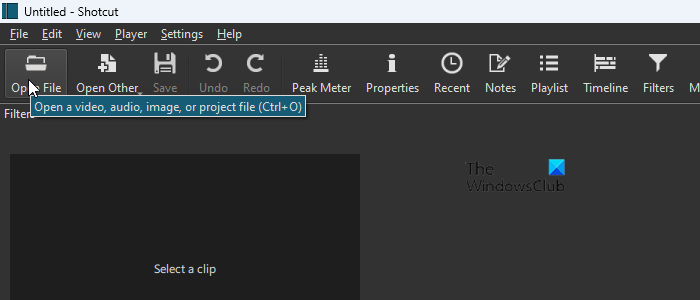
Drag the video file from the Playlist to the Timeline at the bottom. Then drag the audio file and place it on the audio track beneath the video.
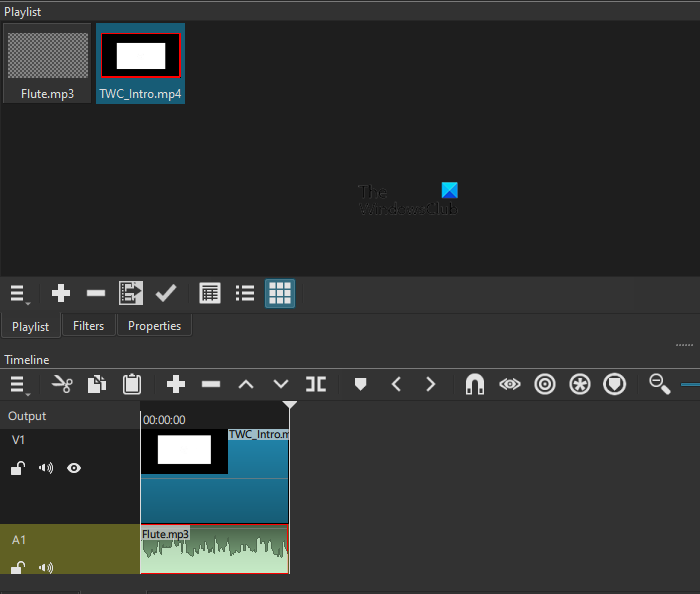
Adjust the position of the audio track to sync it with the video track. You can trim or extend the audio and video by dragging their edges in the timeline. Click the Play button in the preview window to ensure the audio and video are synced properly.
Click Export at the top of the window.
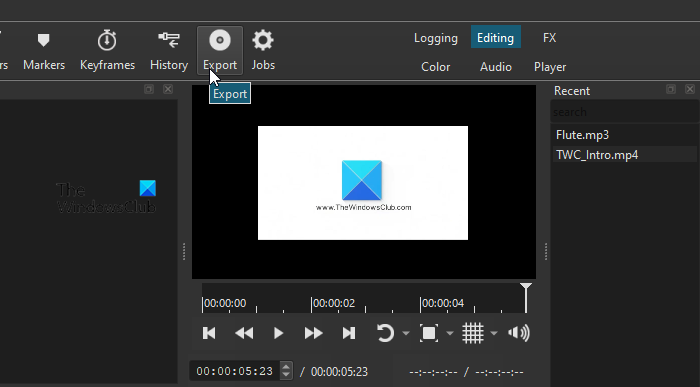
A Presets window will appear, but let the defaults create an MP4 using the H.264 video codec. Click the Export File button. Choose the destination, and save the file.
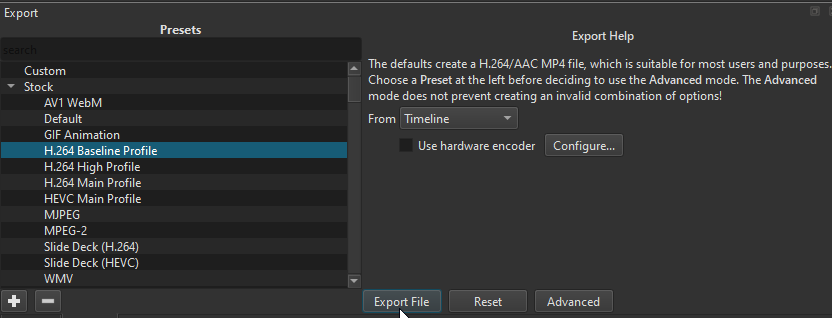
That’s all.
Read: How to split a Video into parts in Windows.
Can VLC merge video and audio files?
Yes, VLC Media Player can combine video and audio files through its Convert/Save feature. For this, you must add the video file, select the option to play another media synchronously, and then add the audio file. Finally, choose the appropriate output profile and start the conversion to merge the files into a single output.
How to merge audio in laptop?
To merge audio files sequentially on your Windows 11/10 PC, you may use a free web-based tool, such as Online Audio Joiner. Visit Online Audio Joiner in your browser tab and click the Add tracks button to upload your audio files. You can also drag and drop the files to arrange them in the desired order. Once the audio files are loaded, adjust the playback intervals (if required), select an output format, and click Join to start the merging process. Once done, click Download to save the merged file to your system.
Read Next: How to add and embed lyrics to MP3 files in Windows.